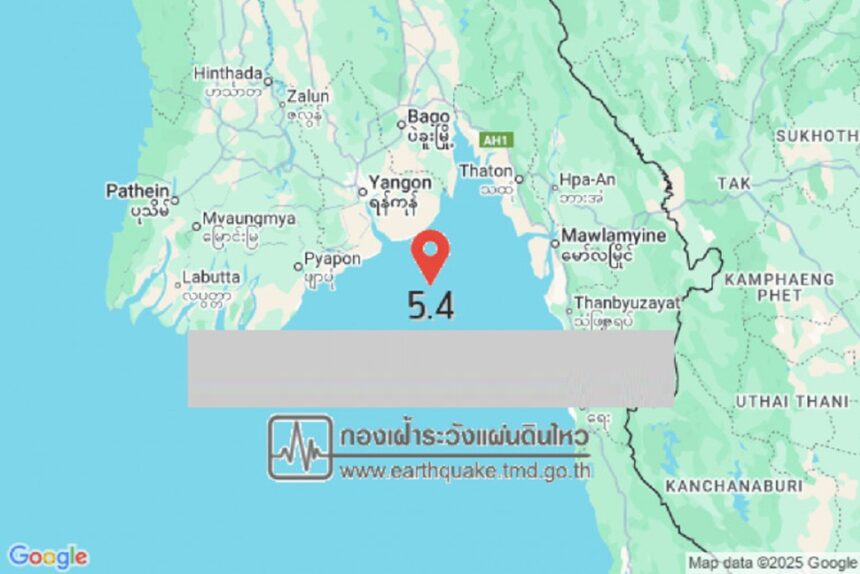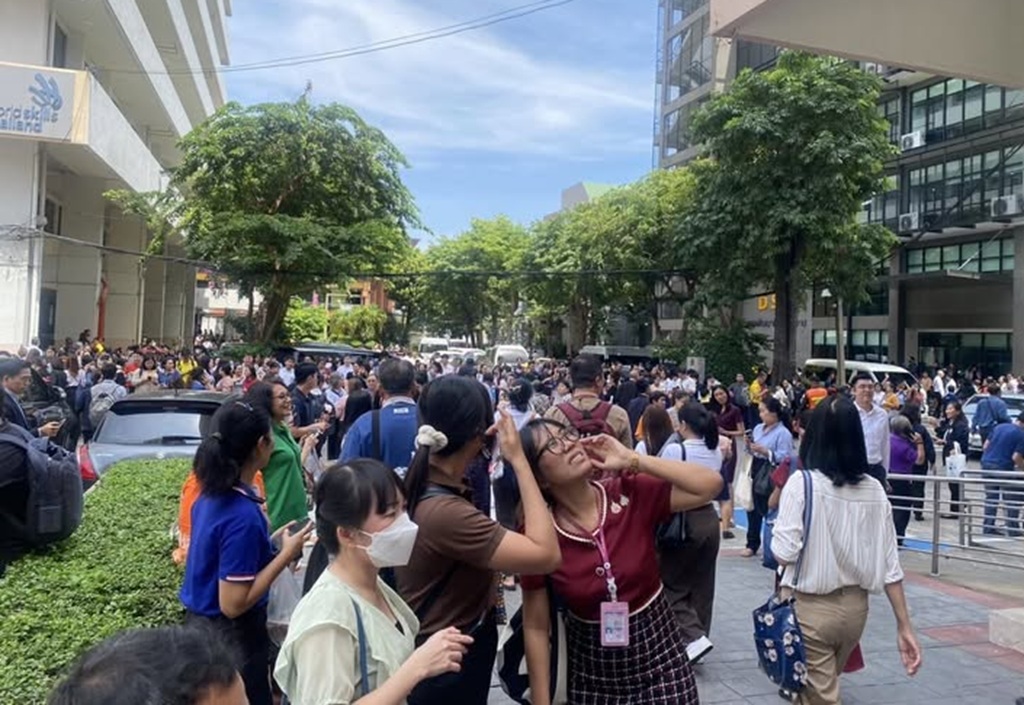BANGKOK – On 21 August 2025, a magnitude 5.4 earthquake struck off Myanmar’s southern coast, with tremors reaching Bangkok, Thailand, over 600 kilometres away. The Thai Meteorological Department stated the earthquake’s shallow depth of 10 kilometres helped the tremors travel so far.
No injuries or serious damage were reported, but people in Bangkok felt the shake. The incident triggered a surge of posts and comments on social media and revived concerns about the city’s preparedness for earthquakes.
The earthquake happened in the Andaman Sea and Nicobar Islands area around 2:47 pm local time. Its effect in Bangkok was most obvious in tall buildings. Many residents noticed ceiling lights swinging, furniture shifting, and some reported feeling strange or dizzy.
Nattaya Srisuk, who works in a Sukhumvit high-rise, said her chair started to move and the lights flickered, making her question if she imagined it until she saw colleagues looking confused too.
Reports of the tremor came in from several parts of Bangkok city. In Sathorn’s office towers, some people left their buildings and waited outside.
Chaiwat Promyothin, an analyst, described the movement as lasting only seconds but said people decided not to wait and went outside at once. Videos on X (formerly Twitter) showed fans swaying and water shaking in glasses.
The hashtag #แผ่นดินไหว, meaning “earthquake” in Thai, quickly climbed to the top of X, as Bangkok locals shared everything from light-hearted memes to real-time footage.
The Thai Meteorological Department explained that earthquakes this close to the surface are usually felt more strongly and can be noticed farther from the epicentre. The fault line in the Andaman area has a reputation for producing large and destructive earthquakes, including the 2004 event that caused a major tsunami.
This time, no tsunami warning was needed, as the earthquake’s strength and location did not trigger the alarm. However, many complained about the lack of a Cell Broadcast alert on their mobile phones. Some questioned if the country’s warning systems were ready for earthquakes happening outside Thai borders.
On X, users like @BKKVibes asked why there was no mobile alert, while others echoed their concerns about the current early warning system.
Dr Somsak Phetcharaporn from Chulalongkorn University explained that Cell Broadcast messages are used for stronger, closer earthquakes.
He said the system is designed to alert the public only when an earthquake poses a direct risk, but accepted the event shows a need for better coordination and quicker updates.
Thailand’s current seismic monitors mainly focus on local faults, so working closely with regional agencies remains important.
The earthquake led to renewed discussion about how at risk Bangkok might be during such events. Experts say Thailand does not sit on a major fault line itself, but its border regions are active.
High-rise buildings in Bangkok are built to meet strict safety codes, but older buildings could be more at risk. Engineers confirmed these standards, though some people questioned the resilience of older properties.
On X, the chat moved past first reactions. Users began sharing earthquake safety tips, like securing heavy furniture and finding safe spaces at home. There were some concerns about possible aftershocks, but experts and the Thai Meteorological Department reassured the public that aftershocks were unlikely to reach Bangkok due to the distance from the centre of the earthquake.
The incident also showed how quickly people turn to social media for updates and support. X became a space for people to compare their experiences and confirm what they felt, helping ease worry. As Ploy Chompoo, a local content creator, put it, seeing others share their stories made her feel connected rather than alone.
By the next day, life in Bangkok went back to normal, but the event stayed on people’s minds. Many now see it as a reminder of the unpredictability of nature and the importance of being ready.
Thai officials urged everyone to stay up to date with reliable sources and review personal emergency plans. Seismologists have kept a close watch on the Andaman area for any further activity, knowing this recent tremor highlighted how social media and public messaging can support the community during times of uncertainty.















